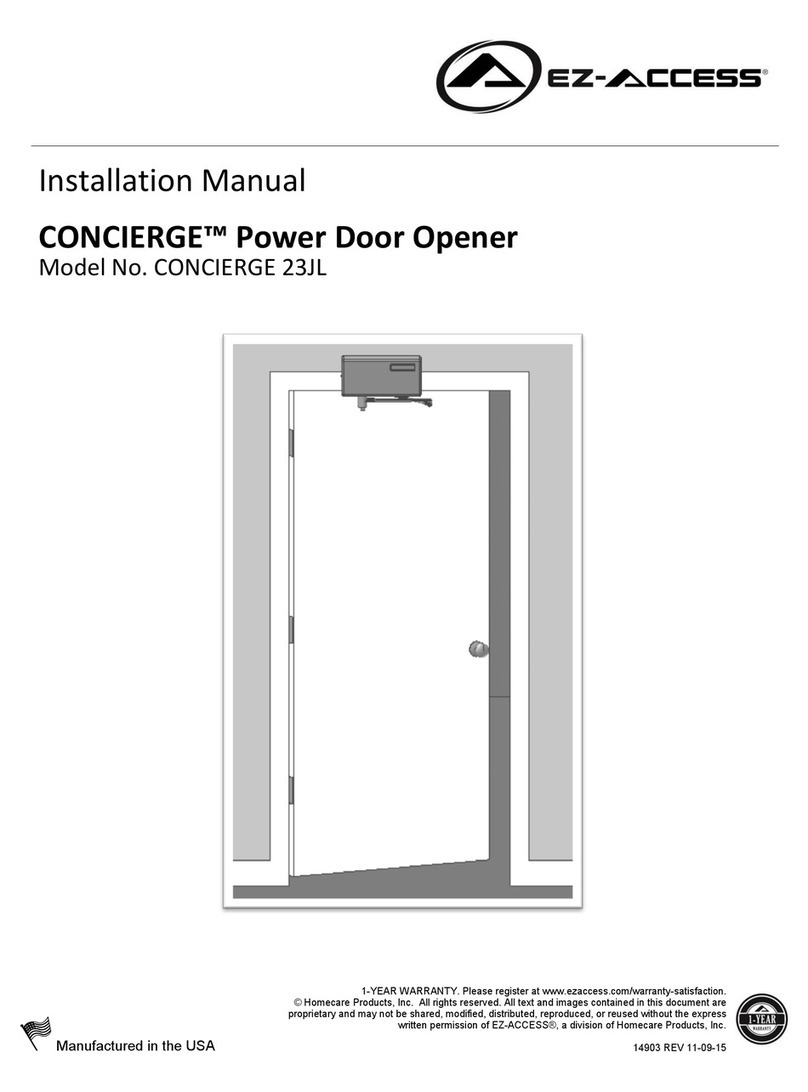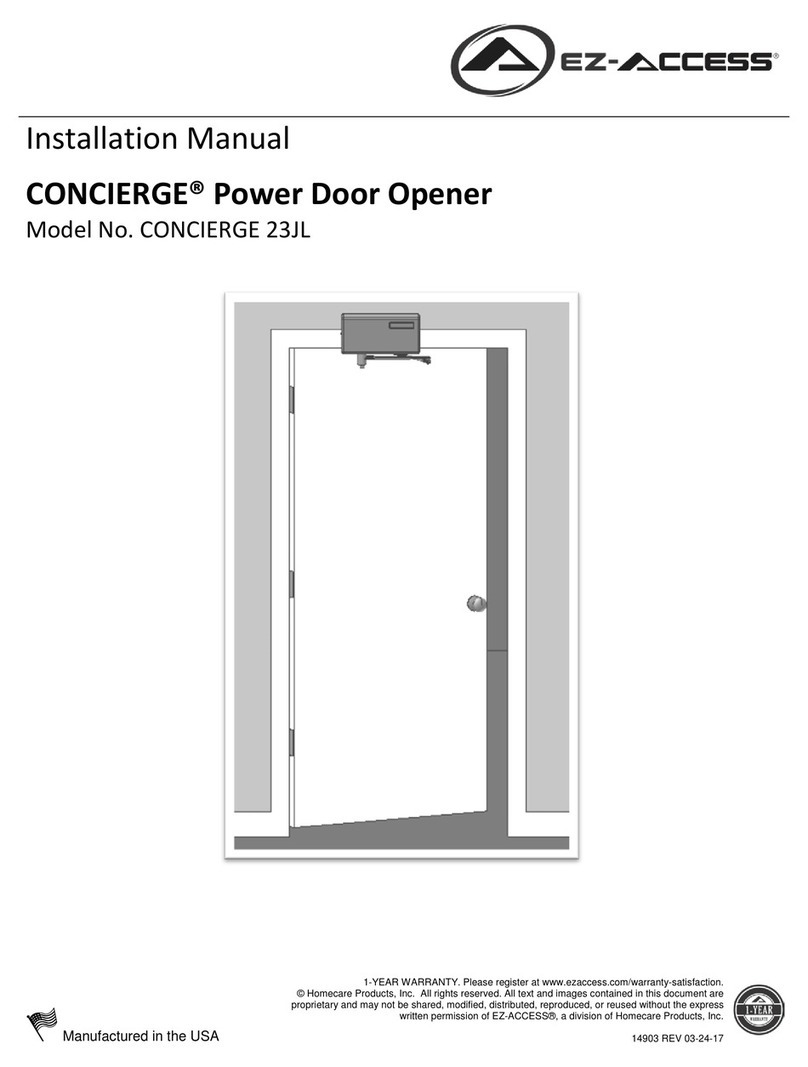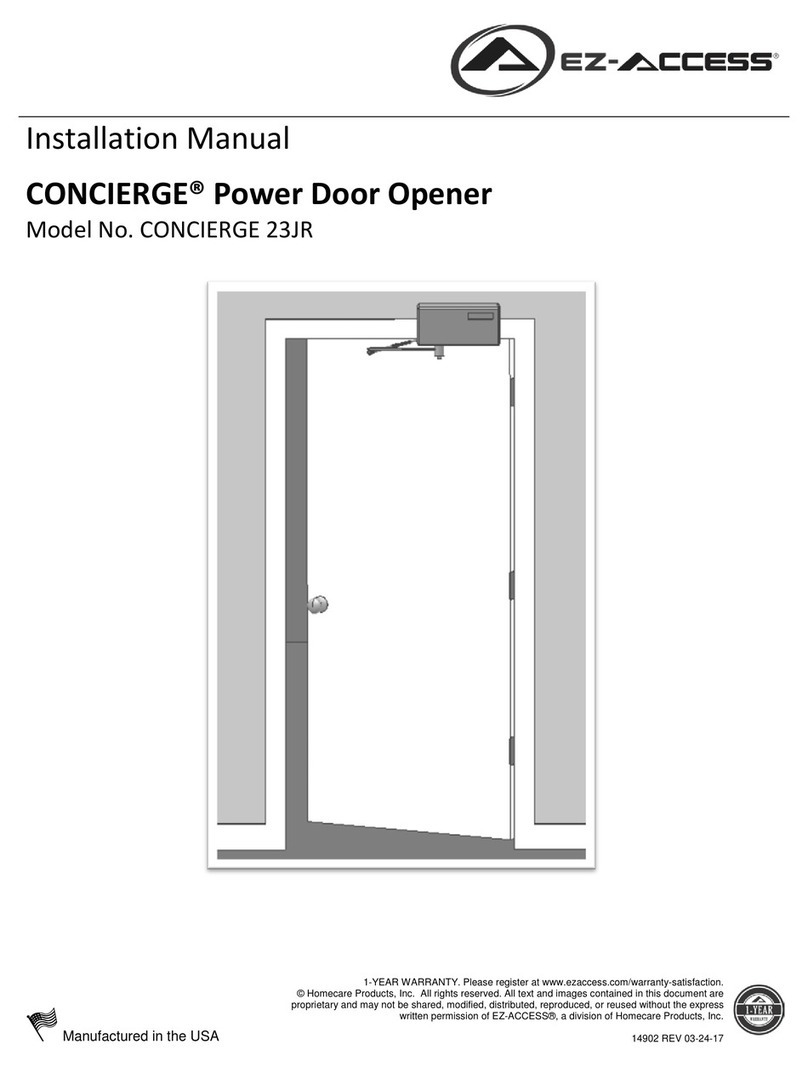
INTRODUCTION
Thank you for purchasing the EZ-ACCESS CONCIERGE. Please read this manual in its entirety before installing or using
your new door opener.
SYMBOL MEANINGS
The WARNING symbol indicates a potentially hazardous condition/situation. The safety warnings throughout
this manual, and on your equipment, if any, are for the protection of people and property. Failure by any
operator to abide by safety warnings will result in a waiver of all liabilities, loss of your warranty, and could
result in equipment damage and or failure, property damage, risk of serious bodily injury, and or death. The
symbol may appear in various colors and in conjunction with other symbols.
The NOTE symbol indicates important information. Failure to obey all notes could result in improper
operation, less-than-optimum equipment performance, and at the sole discretion of the equipment
manufacturer, may void your warranty. The symbol may appear in various colors and in conjunction with
other symbols.
WARNING!
Manufacturer recommends professional installation and maintenance.
Read this manual in its entirety before installation. Understand and learn the location and function of all the
features, safety devices, and labels before operating. Correct installation, proper use, and following of
instructions and obeying safety warnings of the CONCIERGE are necessary for safe operation.
For residential use only.
Observe and avoid all pinch points.
Ensure that there is no interference within the CONCIERGE’s range of movement.
Never modify the CONCIERGE or any of its components.
Periodic inspections by a qualified technician are recommended to help prevent unsafe conditions. Regularly
check that all parts are in good condition and verify all nuts, bolts, screws and other fasteners are undamaged
and secure. If any part of the system is damaged or loose, DO NOT USE until repairs can be made by a qualified
technician.
Do not use CONCIERGE for anything other than its intended purpose.
Do not route power cords where they may become damaged, pinched, create trip hazards, or cause other
safety concerns. Check all CONCIERGE cords frequently to be sure they are not worn or frayed. Stop using the
CONCIERGE immediately and contact your dealer for inspection, repairs, and service if any defect is suspected.
DO NOT patch a broken or damaged cord.
To reduce risk of shock and or electrical hazard, keep all electrical components free from moisture at all times.
Before and during CONCIERGE operation, ensure all hair, jewelry, shirts, ties, shoe laces, and all forms of
clothing and other personal ornamentation are not and do not hang up on anything that may create a hazard.
Maintaining all labels and manuals in legible condition is required by the CONCIERGE owner and is
essential for safe operation. Contact your dealer for additional information, replacement labels and
manuals, or to schedule inspections, repairs or service. For additional care, use or safety information,
please call 1-800-451-1903.
NOTES
Information in this document is subject to change without notice. The most current version of this manual is
available on our website at www.ezaccess.com.
Before installation, ensure that there is enough space for proper CONCIERGE operation.
The CONCIERGE warranty is not transferable. Attempting to tamper with or modify any portion of the
CONCIERGE will void the warranty. Using the CONCIERGE for anything other than its intended purpose will
void the warranty.































